This post was originally posted on my website
Reviews have traditionally been used as a quick way to gauge game sales on Steam. We know reviews aren't the best way to estimate sales, but it's still important to know what makes people write a review for your game, since reviews are an important factor on which the success of the game itself depends.
In this article, I will use sales estimates obtained from other estimation methods, as well as some publicly available sales data, to conduct in depth research into the sales/reviews ratio.
I will examine whether the following points affect the likelihood of players leaving a review.
- Release date - How does the release date affect the sales/review ratio?
- Price - Do more expensive games have a higher chance of getting a review?
- % positive reviews - Do players prefer to leave negative or positive reviews?
- Genres - Do some genres have a better chance of getting a review than others?
- Play time - Does longer playing time increase the chance of player writing a review?
- Demographics - Do player demographics affect the sales/review ratio?
- Audience - How does the audience affect the ratio?
- Number of reviews - Do more popular games have a lower or higher chance of getting reviews?
- AAA vs. indie games - Do indie games have a better chance of getting reviewed than AAA games?
This article will expand on previous research by Simon Carless in 2020 and VG Insights in 2021.
Release date
It is already well known that the ratio of sales to reviews depends on the year the game was released, or more precisely the year the review was written. In 2019, Steam started asking players to leave reviews, which cut the sales-review ratio in half.
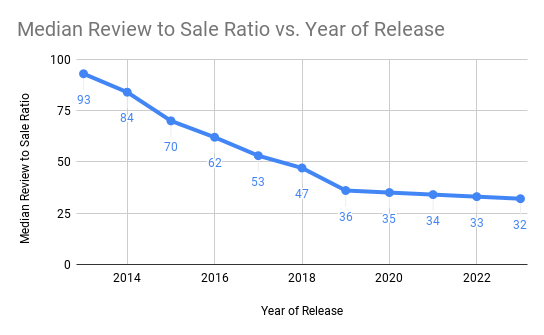
It still seems like the review sales ratio is decreasing ever so slightly every year. However, this may be a consequence of the fact that the percentage of players who write reviews tend to drop off during the lifetime of the game. When a game is novel, players are more likely to leave reviews. Also, games get more and more discounted over time, which increases impulse buying (more on discounts later)
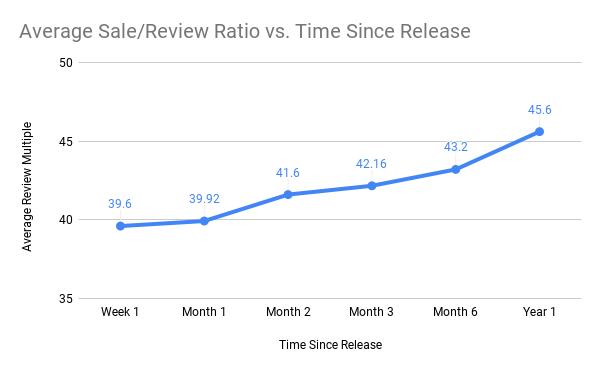
Price
Price is another factor that affects the sales/review ratio. Generally, cheaper games have more sales per review. Free games have almost twice as many sales per review compared to paid games.
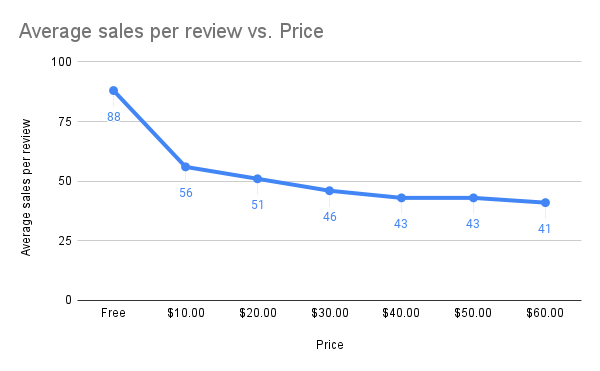
A factor that may affect ratio even more than prices are discounts. Games that were significantly discounted have significantly more sales per review. The same applies to games in bundles. Players who bought a game on sale are less likely to leave a review.
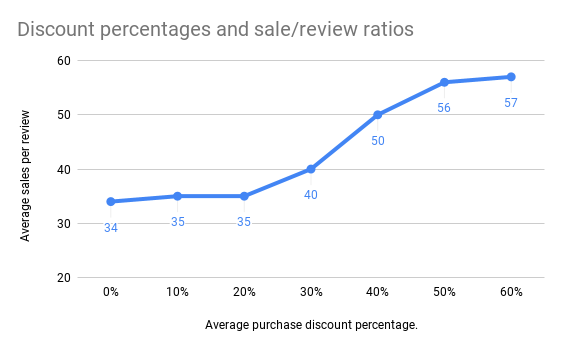
As an example of how price and discounts can affect the sales/review ratio and how wildly it can vary, this game has only 1 review per 1000 players (1000:1 sale/review ratio), according to it's developer!
Review Scores
Games with lower review scores have higher review sales ratios. games with more than 90% positive reviews have a median of around 30 sales per review, while those with around 70% positive, have a ratio close to 60. However, games with under 60% positive have a lower ratio of around 30 again.

Why is it so? It seems that, unless there are some things about the game that really annoy the players, the percentage of people who write negative reviews is constant. However, the percentage of those who write positive reviews is much higher for games that players enjoy.
Genres
There is some correlation between genres and sales/review ratios.
This graph represents the relationship between Steam tags (weighted by tag position) and the sale/review ratio.
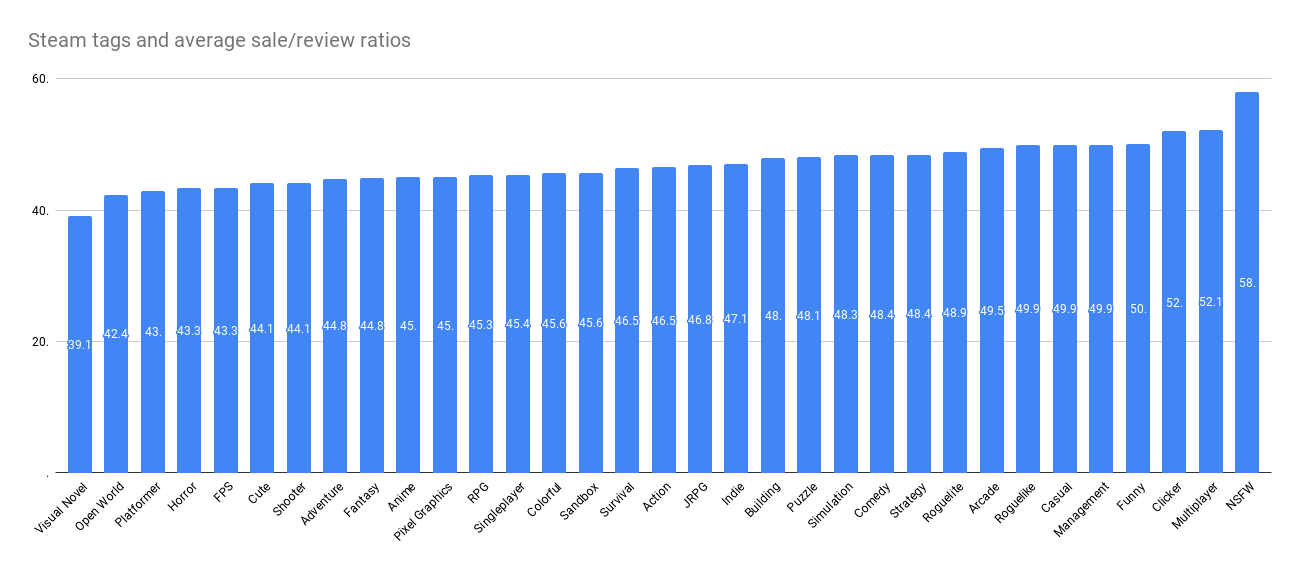
There is also a correlation between genres and review score
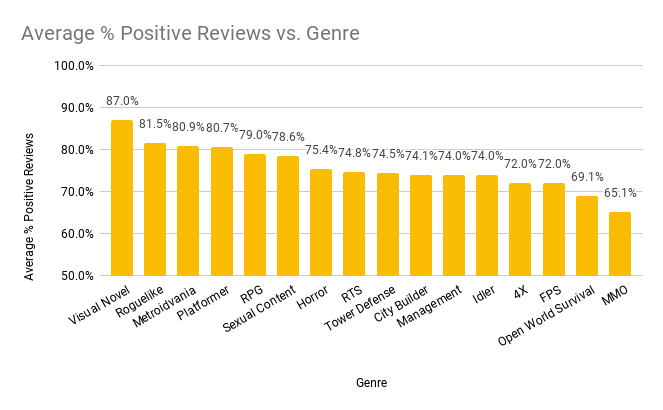
However, surprisingly, genres do not seem to be as important a factor in determining the percentage of players who leave reviews
Playing time
Playing time affects how likely players are to leave a review. The longer they play the game, the more likely they are to write a review.
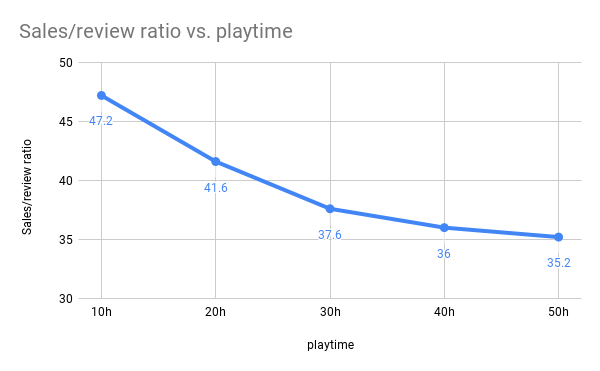
Indie vs AAA games
Small, niche indie games and ultra popular or controversial AAA games have the lowest multiples. Popular Indie and AA games have the highest ratios. For example, Bravery and Greed, published by a big indie publisher (Team17) has a high ratio of reviews to sales (around 100). On the other hand, ELDEN RING, a popular AAA game (recently announced that it sold 20 million units across all platforms) has around 10 million copies sold on steam and half a million reviews, which means it only has around 20 sales per review.
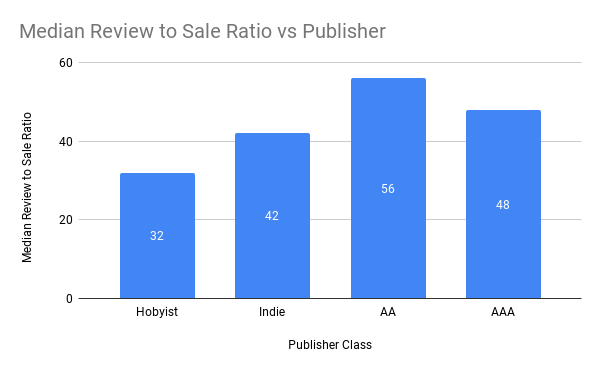
Games that generate a substantial buzz or controversy often receive a higher percentage of reviews due to the heightened interest and engagement of players.
Another thing that can explain why the multiples are smaller for AAA games is that they are generally more expensive and discounted less often
Popularity of the game
This goes along with the previous point. Games with few or very many reviews have the lowest multiples.
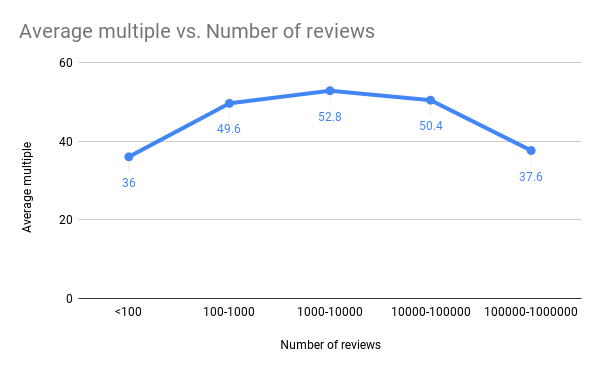
Audience
Audience is perhaps the most significant factor affecting the sales/reviews ratio.If we take a game with a high sales/review ratio like Bravery and Greed and look at the games whose audience overlaps with it (Rogue Heroes: Ruins of Tasos, Backpack Hero), we will notice that they also have a high sales/review ratios. Likewise, if we look at ELDEN RING, we will see that the overlapping games (Dark souls III, Monster Hunter: World, Sekiro: Shadows Die Twice) also have relatively low sales-to-review ratios.
Demographics
There is a correlation between demographics and review multiples. Asian players seem to leave reviews a little more often than their western counterparts.
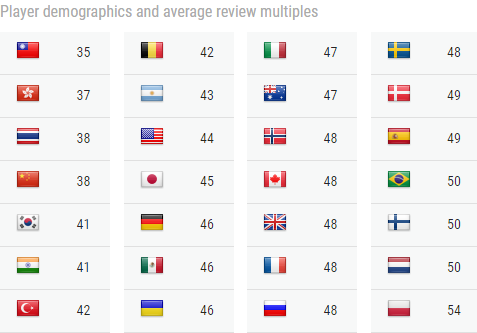
Although, Steam has only recently become popular in Asian countries, and we know that the sales/review ratio has decreased over time, so this is partly a consequence of that.
However, the correlation between review multiples and demographics is not statistically significant
Conclusion
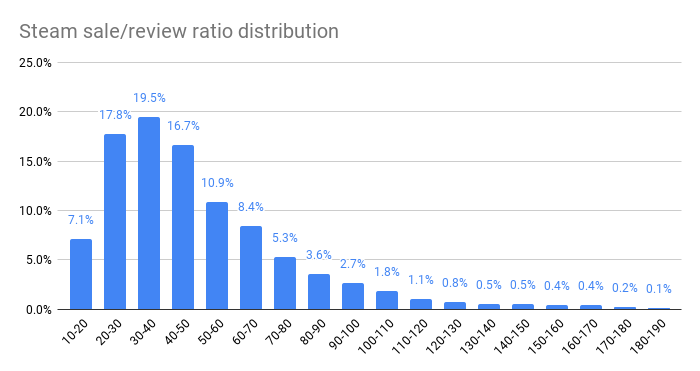
Here, we have seen what can affect the number of people who leave reviews. All in all, the ratio of sales to reviews varies a lot between games and is hard to predict. You shouldn't rely on reviews to judge game sales, because the percentage of people who leave reviews is very unpredictable.
However, reviews continue to be an essential tool for players and developers alike. They help foster a sense of community, aid potential buyers in making informed decisions, and provide developers with valuable feedback to improve future games. Encouraging a higher percentage of users to leave reviews could lead to more comprehensive insights and further enhance the gaming experience for all.
If you found this article interesting, check out our tool at gamalytic.com